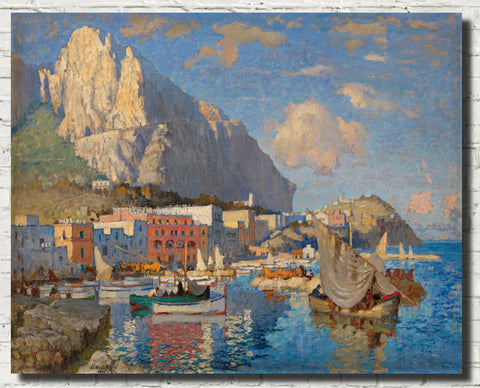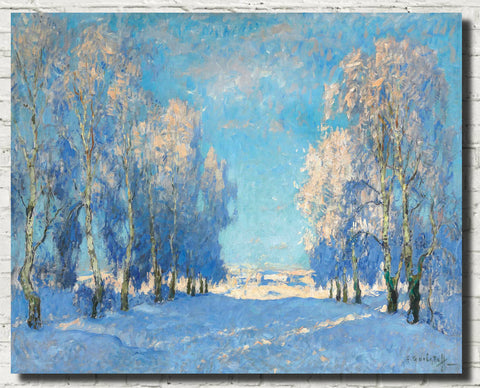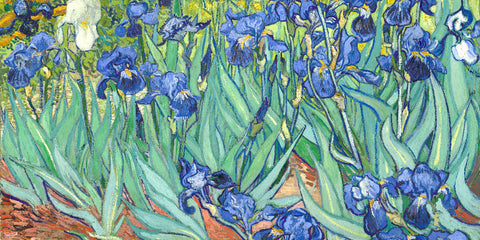Table of Contents:[hide]
Introduction:
Konstantin Gorbatov, a luminary in the realm of Russian post-impressionist art, left an indelible mark with his unique vision and vibrant palette. This article delves into the life, works, and enduring legacy of this remarkable artist, exploring the nuances of his style and the impact he had on the art world.
1. Early Life and Influences
Hailing from the picturesque town of Stavropol in southern Russia, Gorbatov was born on May 15, 1876. His artistic journey began at an early age, with his parents recognizing and nurturing his innate talent. Under the mentorship of local artists, he honed his skills and developed a deep appreciation for the works of Russian and Western European masters.
The Formative Years
Gorbatov's formative years were marked by a fusion of traditional Russian art and the emerging European avant-garde movements. Influences from luminaries like Ilya Repin and Valentin Serov shaped his early works, providing a foundation for the distinctive style he would later embrace.
2. Artistic Evolution: From Realism to Post-Impressionism
Transition to Post-Impressionism
Gorbatov's artistic evolution saw a gradual departure from the constraints of realism towards a more subjective and emotional approach. Inspired by the post-impressionist movement, he embraced vibrant colors, bold brushstrokes, and a heightened sense of expressiveness, forging a unique path in the Russian art scene.
Capturing Light and Atmosphere
Gorbatov's mastery lay in his ability to capture the ephemeral qualities of light and atmosphere. His landscapes, often depicting scenes from rural Russia and its vibrant peasant life, showcased a harmonious blend of color and form that transcended mere representation.
3. Notable Works: A Glimpse into Gorbatov's World
"View of Capri"
Konstantin Gorbatov's 'View of Capri' enchants with its post-impressionist allure. The canvas breathes life into the captivating landscape, as Gorbatov's masterful brushstrokes vividly depict the serene beauty of Capri. A harmonious dance of color and light transports viewers to the idyllic shores, capturing the essence of the island's charm in this timeless masterpiece."
"A Winters Day"
In "A Winter's Day," Konstantin Gorbatov's mastery unfolds in a symphony of frost-kissed hues. The canvas captures the serene beauty of winter, where ethereal light dances on snow-laden landscapes. Gorbatov's subtle brushstrokes evoke a tranquil ambiance, inviting viewers to immerse themselves in the quietude of a winter's day through this enchanting post-impressionist portrayal.
4. Legacy and Impact
Influence on Russian Art
Gorbatov's impact on Russian art was profound, as he bridged the gap between traditional Russian painting and the avant-garde movements of the early 20th century. His legacy endures through the artists he inspired and the continued appreciation for his contributions to the evolution of Russian post-impressionism.
International Recognition
While Gorbatov's works found acclaim in Russia, his international recognition grew steadily. Exhibitions across Europe showcased the universality of his themes and the transcendent beauty embedded in his canvases.
5. Frequently Asked Questions (FAQs)
1. What distinguishes Konstantin Gorbatov's post-impressionist style?
Gorbatov's post-impressionist style is characterized by vibrant colors, bold brushstrokes, and a heightened emotional expressiveness. He departed from the realism of his early years, embracing a more subjective approach to art.
2. Which painting is considered Gorbatov's masterpiece?
"The Red Square" stands as one of Gorbatov's masterpieces, capturing the essence of Moscow with its warm hues and timeless charm. Another notable work is "Sunset in the Birch Grove," showcasing his brilliance in portraying nature.
3. How did Gorbatov's upbringing influence his art?
Born in Stavropol, Gorbatov's upbringing exposed him to the beauty of rural Russia. His early mentors and exposure to both Russian and Western European art traditions laid the foundation for his unique artistic vision.
4. What themes are prevalent in Gorbatov's works?
Gorbatov's works often depict scenes from rural Russia and peasant life. His paintings capture the beauty of nature, the vibrancy of city life, and the interplay between light and atmosphere.
5. How did Gorbatov contribute to the evolution of Russian art?
Gorbatov bridged the gap between traditional Russian art and the avant-garde movements of the early 20th century. His post-impressionist style paved the way for a new era in Russian art, influencing subsequent generations of artists.
Prints and Canvas Panels
Related Articles
Post Impressionism





